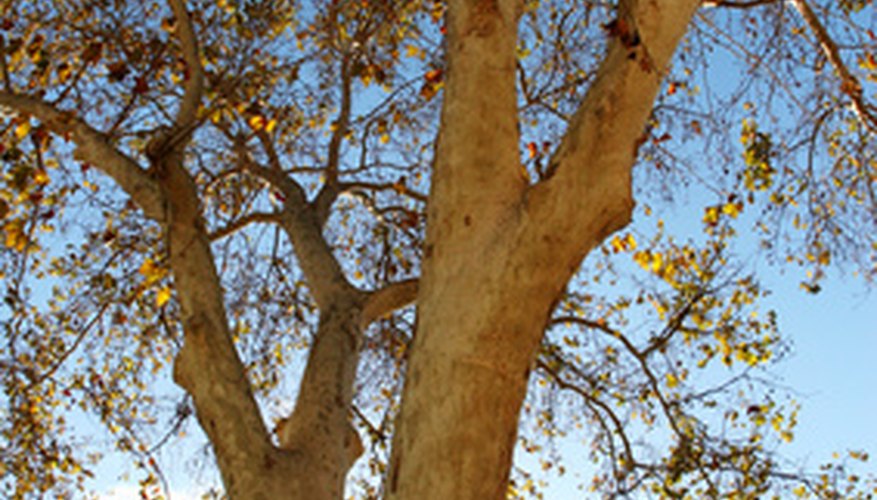The sycamore is a tall, sometimes-massive, fast-growing tree that frequents riverbanks and parks throughout the UK. This tree often has white, exfoliated, and splotchy bark and prefers rich, moist soils. The leaf of this tree is quite large and turns a bright yellow ochre colour in the fall. Because of its unusual shaped fruit that looks like a small ball, the tree is sometimes called the buttonwood tree.
Flowers
Since the sycamore (Platanus occidentalis) forms male and female flowers that grow on the same tree, the tree is referred to as a monoecious flowering plant. The flowers come out in May, and since they are wind-pollinated, they are not very showy or aromatic. They hang down from the tree in small, spherical heads suspended from a short, solitary stem.
Pollination
Sycamore trees are wind-pollinated in the spring after both the inconspicuous male and female flowers have blossomed. Pollen from the male flower has to be carried to a neighbouring plant in order to be able to fertilise the female flowers. As is the case with most wind-pollinated plants, large quantities of pollen are produced by the male flowers to ensure a successful pollination.
Seed formation
The seeds form from the base of the female flower. Each cluster of flowers forms a large hanging ball that stays on the tree until spring. This is the fruit of the sycamore, and because it contains no fleshy matter, the birds and small animals are not attracted to it as a source of food. The scalelike surface of the fruit is actually a mat of tiny seeds.
- The seeds form from the base of the female flower.
- Each cluster of flowers forms a large hanging ball that stays on the tree until spring.
Seed dispersal
Sycamore seeds are dispersed in the early spring, when the ball-like fruit breaks apart. The tiny capsules are attached to several long silvery fibres that can carry the tiny seed long distances through the air. They can even take a trip down the river or be consumed by small animals before they find a suitable place where they can germinate.
Germination
Germination of sycamore seeds occurs in the spring, usually in a wet environment, where the tree likes to grow. Since seed dispersal is usually wind-borne, the seeds can travel far from the parent tree. It is here along the riverbank and watercourse that the seedling has a distinct competitive advantage, for it seems that the seeds can germinate in very wet conditions, and the seedling can survive total immersion in water for weeks at a time.
